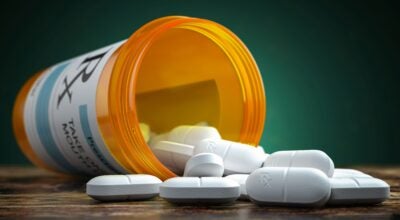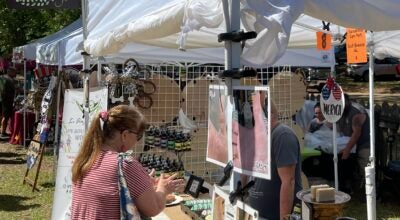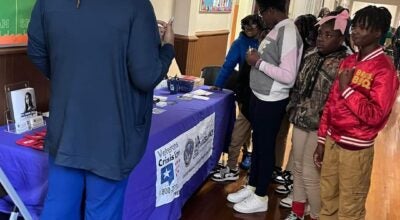Practice safety this July 4th
Published 3:59 pm Tuesday, July 2, 2013
By Fred Guarino
The Lowndes Signal
Today is the Fourth of July, the day we celebrate the Declaration of Independence by our nation’s founding fathers from England.
It is also a day of family get togethers, cookouts, swimming, boating and fireworks. Law enforcement, conservation and fire officials are offering safety tips to help make this Fourth a happy and healthy one for all.
Fireworks Hayneville Fire Chief Jesse McCall said, “Don’t let the kids handle fireworks unsupervised.” He said to light firecrackers, “place them on the ground… and just be conscious of your surroundings.” While he said the ground could still be wet, fires can occur and “We have to be mindful of where we shoot them at.”
The Alabama integrated state law enforcement task force including the state law enforcement agency, Department of Public Safety, Fire Marshal’s Office, Public Service Commission, Alcoholic Beverage Control Enforcement, Department of Revenue, Forestry Commission, Department of Conservation and Natural Resources (Marine Police Division) and Alabama Department of Transportation all stress that “safety” is a must for Fourth of July fireworks fun.
“Responsible for two out of five fires and hundreds of injuries reported across the state each Fourth of July, fireworks can be dangerous, even deadly, if not handled with care,” the task force reports. Tips include: • Use common sense, and obey the law. Do not discharge fireworks within 600 feet of any enclosed building; do not shoot fireworks into or from a motor vehicle; do not shoot fireworks toward people.
• Supervise children 15 and younger who want to purchase or use fireworks.
• Use fireworks in a clear, open area outdoors and away from flammables and combustibles. There also should be an ample water supply and fire extinguisher on hand.
• Never consume alcohol while handling fireworks. Law enforcement presence “In addition, SLE Task Force officers will work together to create a highly visible enforcement presence and to promote public safety during the Fourth of July holiday period. They are intent on preventing crimes and violations that lead to deaths and injuries. All available personnel will combine forces with county and municipal agencies across the state to conduct various details designed to enhance public safety and to enforce Alabama’s laws, including fire, traffic, boating and alcoholic beverage laws.” SLE Task Force officers also urge everyone to keep in mind these tips:
• Restrict access and closely monitor teens to prevent underage use of alcoholic beverages.
• Avoid driving or boating while under the influence of alcohol or drugs.
• Buckle up on the road or on the water — no matter how short your trip. Occupants of all ages should use seat belts or child restraints when traveling by motor vehicles. On waterways, all occupants of water vessels should use U.S. Coast Guard-approved life jackets. Swimming The U.S. Army Corps of Engineers Mobile District says, “Enjoy your holiday. Play it safe and return home alive.” According to the Corps, “Drowning is a leading cause of accidental death, yet the number of deaths by drowning could be reduced drastically if everyone would wear a life jacket. Statistics show that 89 percent of those who drown at U.S. Army Corps of Engineers lakes and rivers may have survived if they had worn a life jacket.”
Safety tips include:
• Swimming in open water is different and more difficult than in a swimming pool. You can tire more quickly and get into trouble due to waves, current, lack of experience, exhaustion or your abilities have decreased. You could find yourself in a situation where you are fighting for your life with no chance of survival. Even the best swimmers can misjudge their skills and abilities while swimming in a lake or river. Conditions can change quickly in open water, so before entering the water, please wear a life jacket.
• Peer pressure can sometimes kill people so friends should make friends swim in designated areas and wear a life jacket.
• While on or near the water watch your children at all times. It only takes 20 seconds for a child to drown. National Water Safety Program Manager for the U.S. Army Corps of Engineers Pam Doty said, “Usually people believe that if someone is drowning they will yell for help and that is not the case at all. Several people drown every year within 10 feet of safety because the people around them did not recognize the signs of drowning.” She said this is because the four signs of a drowning victim can resemble someone just playing in the water. They include head back, mouth open gasping for air, no yelling or sound, and arms slapping the water like they are trying to climb out of the water. According to Doty, properly rescuing someone should never include contact with them unless you are a trained lifeguard. Reach out to the victim with something to keep your distance or throw them something that floats to pull them to safety.
Boating
• Boaters or those swimming near boats should be aware that carbon monoxide is an odorless, invisible, and silent killer. Carbon monoxide can accumulate anywhere in or around your boat regardless of what type of boat you have. It is heavier than air and lighter than water, so it floats on the water’s surface.
• Early symptoms of carbon monoxide poisoning include eye irritation, headache, nausea, weakness and dizziness. Knowing these signs what to do to prevent them can help you stay alive. • Install and maintain carbon monoxide detectors on and inside your boat. Maintain a fresh circulation of air through and around your boat at all times. Avoid areas of your boat where exhaust fumes may be present.
•Do not let those you love swim under or around the boarding platform because this silent killer could be waiting for them and they will not even know it before it is too late.





